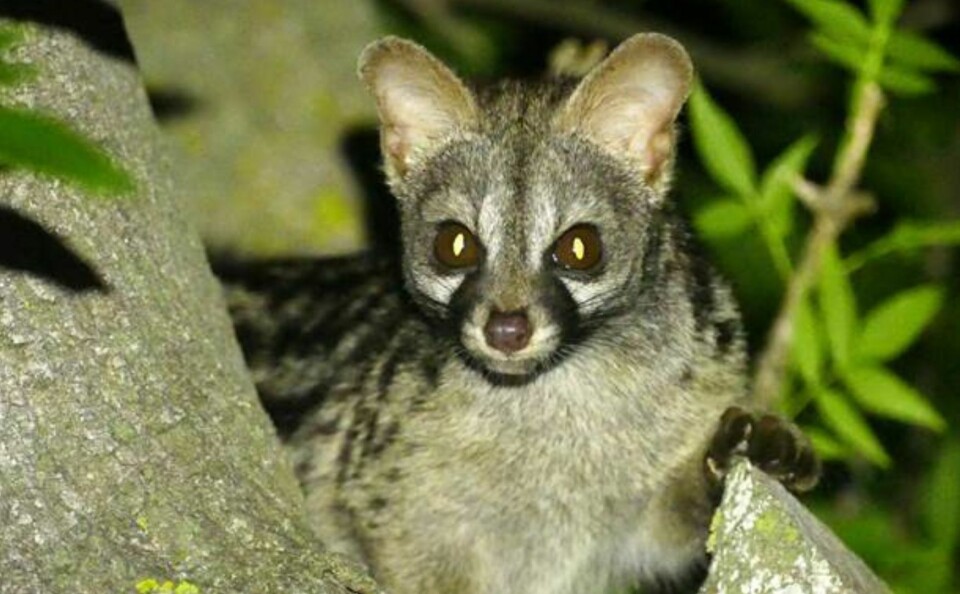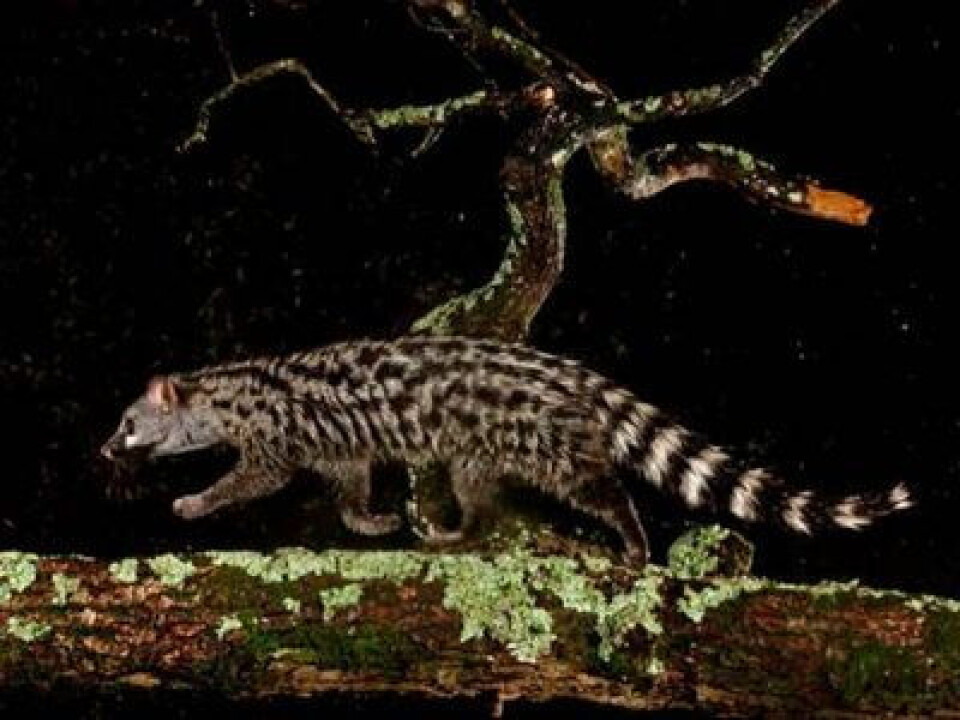-
Escaped pink flamingo from Cornwall zoo sighted in Brittany
Four-month old flamingo managed to fly over her walled enclosure at start of month
-
Village gives free rat poison to tackle infestation in southern France
Local authorities hope the measure will greatly reduce rat numbers in the area
-
How endangered Iberian ibex is thriving after French Pyrenees comeback
Species is booming after a successful reintroduction programme, enhancing biodiversity and ecosystem health
The genet - a rarely seen carnivore is at home in French woodland
Nature expert, Jonathan Kemp, on his chance encounters with a nocturnal hunter

The Aude is reputedly one of the richest departments in France for biodiversity. What is more, it is possible to find animals here that are very little known.
In the mammal domain many of them are nocturnal, partly as a response to a long history of persecution by people, but also as a result of their feeding techniques, especially if they are carnivores, where hunting at night gives more chance of surprising their prey.
I have lived for more than 30 years in the Aude, and have seen one of the most beautiful, the Common Genet, (Genette) only three times, twice after dark in car headlights and once a dead one beside the road.
Read more: Nature watch: rescue vulture released in France, brown bear too ‘tame’
It is the least known of Europe’s carnivores
The best of the sightings was after leaving a concert late one evening, me and a friend took a wrong turn and ended up driving along a forest track looking for a place to turn.
In the headlights just in front of us a genet bounded out and continued along the path for 20 metres before slipping off into the wood, so we had great views.
This genet (below) scampering along a branch definitely looks like it regretted being out in the rain!

Photo credit: Mathieu vaslin LPO de L'Aude
Used to control rodents in the home
Genets are members of the family of viverrids, indigenous to Africa, but were either introduced to Europe more than 1,000 years ago by the Moors, as semi-domesticated pets to be used to control house rodents or are remnants of a population that crossed over the Gibraltar land bridge before it collapsed more than three million years ago.
There is some evidence that the presence in Europe is natural; they are a little smaller than their African cousins, so evolution has played its part in the development.
Despite their mongoose-like look, recent DNA studies have shown that mongooses are more closely related to hyenas rather than viverrids.
About twenty years ago in Burkina Faso I was asked to translate (from French to English) for a group of westerners visiting a local indigenous healer, and was in his cabin in the bush for a couple of hours one afternoon.
At some point I saw a movement of a strange animal at the back of the hut, poking about amongst the pots of miscellaneous substances and piles of dried herbs that were the tools of his trade.
At the time I did not know what this strange animal was, but now know that it was genet; clear evidence that they can be domesticated.
Latrines mean genets are close by
They still remain a very under-studied creature, and even in their European stronghold, Spain, there are no accurate estimates as to the population.
They are probably more common than would be expected from the rare sightings, being by nature very discreet and active mainly at night.
They are good tree climbers but also hunt on the ground, where they are a little more likely to be spotted.
Fortunately they leave unique traces which are typical to the species. Once you have become familiar with their latrines (crottier), which are often placed near a large stone, it becomes more possible to photograph these beautiful creatures.
The latrines are recognisable by the length of the droppings – up to twenty centimetres – but often broken into smaller lengths, black when fresh but becoming whiter with age, and containing fur and small bones of their prey.

Photo: Genet latrine; Credit: Francine Terrier
One or two dedicated naturalists here in the Aude are experts in making precise analysis of the diet of the animals from their droppings; actually a valuable service in order to understand conservation issues and changes that are taking place in the diets of these secretive animals.
Read more: Spring nature spotting in France: clues animals and birds leave behind
Genet scent is not unpleasant
As with badgers (blaireau) and otters (loutre) genets use these latrines as territorial markers, and several individuals might make use of the same latrine, thus exchanging information; as do, of course, our dogs.
They can recognise individuals by the odour of the deposit that is actually called civet, (the same word as another member of the viverrid family), and also when a member of the female sex is coming into breeding condition, and its age.
The scent comes from a special perineal gland located between the genitals and the anus, and is deposited by squatting.
Genet scent is not unpleasant, unlike that of true civets. Although generally territorial and solitary the areas of males and females can overlap.
Male genets tend to use their urine to scent mark, rather than the civet.
Young kits can purr and are weaned after 6 months
Genets are about the size of a slim fox, forty to sixty centimetres long without the tail, lithe and quick. The family shared a common ancestor with cats a very long time ago.
Weighing about 1.5 to 2.5 kilograms, the claws are semi-retractable; they are 99% carnivorous with a varied diet from small mammals, birds, insects, amphibians, and in times of need, some fruit like figs and olives.
They are solitary and hunt mainly by scent, active mainly after night fall and just before dawn.
The females will give birth to two or three kits, and a healthy adult will live for about fifteen years.
They are mainly quiet animals but do vocalise occasionally, during mating they may meow and the female will growl when she wants to chase the male away. The kits can also purr.
Generally they give birth in the summer months either in a hollow tree or a burrow lined with vegetation, the kits being blind at first but their eyes open by the time they begin to explore the outside world at eight days.
They will be weaned after six months, and become independent after a year.
I feel very privileged to have glimpsed this wonderful animal, even if it was only for a few brief seconds.
Just one of the many surprises that lurk in our French woodlands – but you have to be lucky!
Related articles
Why are wild boars now a common sight in French towns?
Tails of the riverbank: French beavers are back
Petition to change law to help hedgehogs survive in France gains pace
























